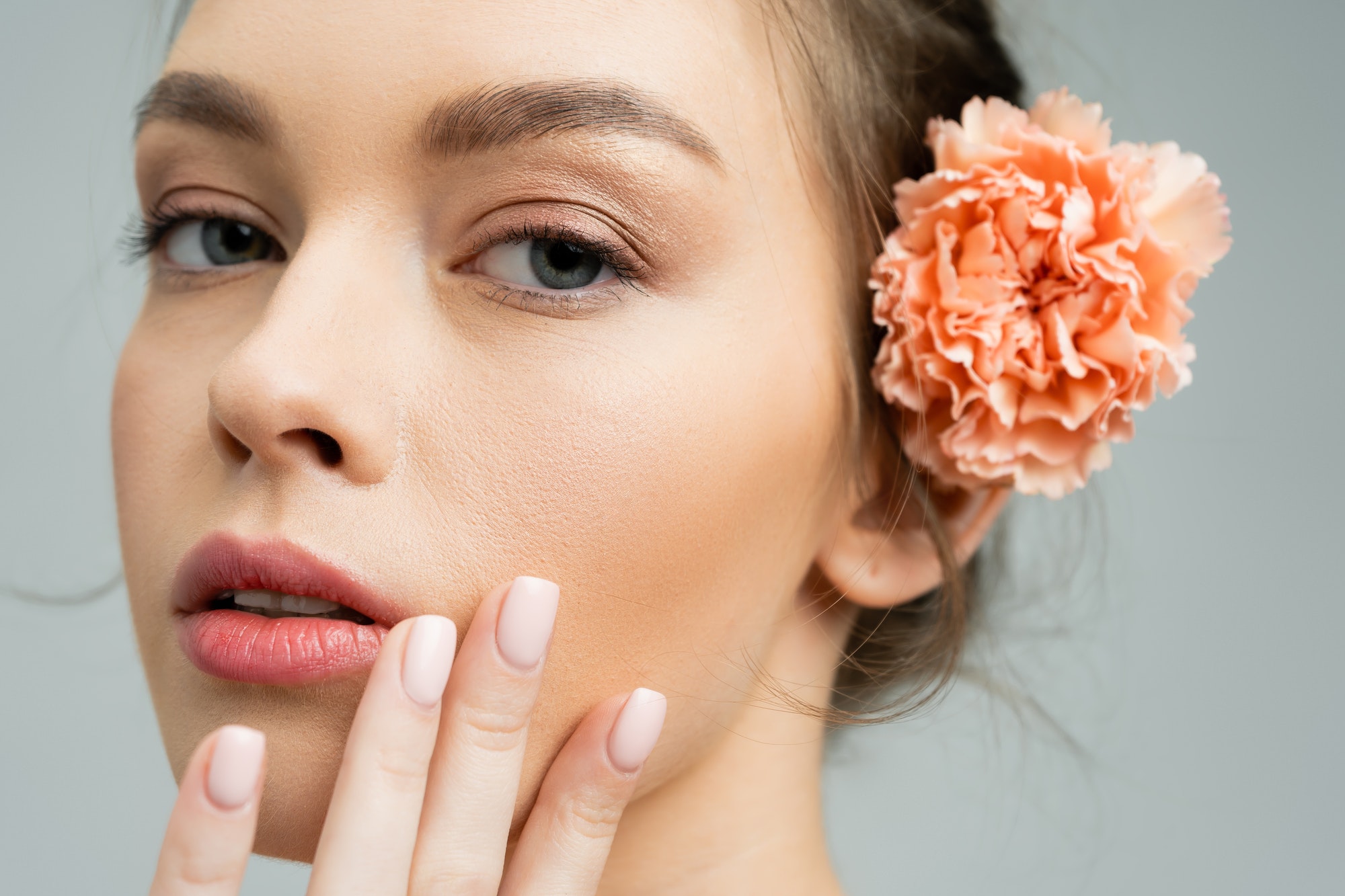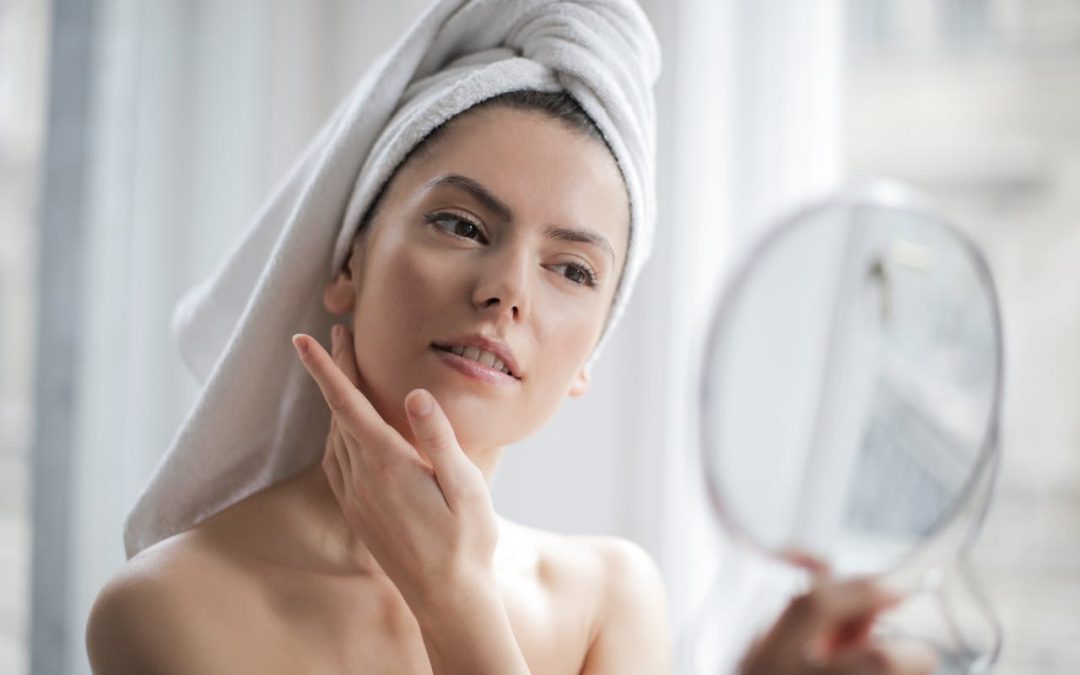Dermaplaning is a popular skincare treatment involving the use of a surgical scalpel to gently scrape off the outer layer of dead skin cells and peach fuzz from the face. This exfoliation process reveals smoother, brighter, and more youthful-looking skin. While it’s a relatively safe procedure, the skin is more sensitive afterward, and recovery can take time, especially for those with sensitive or acne-prone skin.
To ensure optimal results and speed up skin recovery after dermaplaning, you need to follow specific aftercare steps, be mindful of the products you use, and adopt a holistic approach to skincare. In this article, we’ll explore in-depth ways to enhance skin healing after dermaplaning, with practical tips and expert recommendations.
Hydrate Your Skin Immediately After the Procedure
After dermaplaning, your skin may feel dry or tight. One of the best ways to support recovery is to keep the skin well-hydrated. Hydration not only helps calm irritation but also speeds up the natural healing process of the skin.
How to Hydrate:
- Use a gentle, hydrating moisturizer with ingredients like hyaluronic acid, glycerin, or ceramides. These compounds draw moisture into the skin, helping to reinforce the skin’s natural barrier.
- Mist your face with a hydrating facial spray containing soothing elements like rose water, aloe vera, or chamomile. This adds a quick burst of moisture.
- Drink plenty of water. Staying hydrated internally will reflect positively on the skin’s healing process.
Avoid:
- Heavy, greasy moisturizers or creams that might clog pores. These can lead to post-dermaplaning breakouts or irritation.
Protect Your Skin from the Sun
One of the most crucial steps in your recovery is sun protection. Dermaplaning removes the top layer of skin cells, leaving your skin more exposed and sensitive to harmful UV rays. If you’re not careful, unprotected sun exposure can lead to hyperpigmentation or even sunburn.
How to Protect:
- Apply a broad-spectrum SPF 30 or higher sunscreen daily, regardless of whether it’s sunny or cloudy outside. Ensure your sunscreen is non-comedogenic, lightweight, and free from irritating chemicals like oxybenzone.
- Wear protective clothing like hats, or use umbrellas when outdoors for extended periods.
- Limit your time in direct sunlight, especially during peak hours (10 AM to 4 PM).
Avoid:
- Sun exposure without protection, especially in the days immediately following dermaplaning, as your skin is more prone to damage.
Be Gentle with Your Skincare Routine
Your skin will be more sensitive after dermaplaning, so it’s essential to modify your skincare routine accordingly. Be extra cautious with the products you use, as harsh or active ingredients may cause irritation or inflammation.
Recommended Routine:
- Cleanser: Use a gentle, non-foaming cleanser free of fragrances or alcohol. Look for products labeled as “hydrating” or “for sensitive skin.” Micellar water or oil cleansers can also be good options.
- Toner: Opt for an alcohol-free, hydrating toner with soothing ingredients like rose water or chamomile. Avoid toners with strong astringents or exfoliants.
- Serum: Choose a hydrating serum that focuses on skin recovery. Hyaluronic acid-based serums or those containing niacinamide can help with hydration and barrier repair.
- Moisturizer: Stick to lightweight, non-comedogenic moisturizers, and use them consistently throughout the day to keep your skin hydrated.
Avoid:
- Harsh exfoliants, retinoids, or any products containing strong acids (like AHAs, BHAs, or glycolic acid). These can exacerbate irritation and slow down the healing process.
- Scrubs, loofahs, or brushes, as they can cause micro-tears in the delicate post-dermaplaning skin.
Soothe with Cooling and Calming Ingredients
Post-dermaplaning, your skin may experience mild redness, heat, or irritation. Cooling and soothing ingredients can help reduce inflammation and promote faster healing.
How to Soothe:
- Aloe Vera Gel: Apply pure, organic aloe vera gel to the skin. Aloe is a natural anti-inflammatory agent that helps cool and soothe irritated skin.
- Cucumber Slices: Place cool cucumber slices on your face for 10-15 minutes. Cucumbers are known for their hydrating and anti-inflammatory properties.
- Green Tea Compress: Brew green tea, let it cool, and use a cotton pad to gently apply it to the skin. Green tea contains antioxidants and anti-inflammatory compounds that can help calm irritation.
Avoid:
- Any treatments or products with menthol or peppermint, as they can cause an overreaction on freshly treated skin.
- Hot water or steam, which can exacerbate redness and cause inflammation.
Rebuild the Skin’s Barrier with Ceramides and Lipids**
The outer layer of the skin, known as the stratum corneum, serves as a protective barrier. Dermaplaning temporarily disrupts this barrier, making your skin more vulnerable to environmental stressors. To speed up recovery, focus on reinforcing the skin’s natural defenses by replenishing lost ceramides and lipids.
Key Ingredients for Barrier Repair:
- Ceramides: These are lipids (fats) that are naturally present in the skin barrier. Using ceramide-infused moisturizers will help restore and strengthen the skin’s outer layer.
- Fatty Acids and Cholesterol: These help to lock in moisture and repair the barrier function. Look for products containing essential fatty acids, like linoleic acid, or oils like squalane.
Avoid
- Products that strip the skin of its natural oils, like those containing alcohol or sulfates.
Avoid Makeup for at Least 24-48 Hours
After dermaplaning, your skin needs time to heal and breathe. Applying makeup too soon can clog your pores and introduce bacteria, which might cause irritation or breakouts.
Why It’s Important:
- Freshly exfoliated skin is highly absorbent, meaning any chemicals or contaminants in your makeup can penetrate deeply and cause adverse reactions.
- Your skin is more vulnerable to infection post-dermaplaning, and makeup can harbor bacteria, which increases the risk of complications.
Recommendation:
- Wait at least **24-48 hours** before applying any makeup, particularly heavy foundations or powders. When you do return to makeup, use mineral-based products that are non-comedogenic and gentle on the skin.
Avoid:
- Heavy, oil-based makeup products, as they can clog pores and disrupt healing.

Sleep on Clean, Soft Bedding
Your skin is most susceptible to bacteria, dirt, and sweat after dermaplaning, making it essential to ensure that your sleeping environment is clean and gentle on the skin.
Steps to Ensure Clean Sleep:
- Change your pillowcases frequently, ideally every other night, to minimize the risk of introducing bacteria to your face while you sleep.
- Use soft, natural fabrics like silk or satin pillowcases. These materials reduce friction and irritation on the skin, helping to prevent post-treatment redness or sensitivity.
Avoid:
- Rough fabrics like cotton or polyester, which can create friction against your sensitive skin and exacerbate irritation.
Avoid Heat, Saunas, and Intense Exercise
Heat and sweat can irritate your skin and slow down the recovery process after dermaplaning. This includes avoiding hot environments, intense workouts, or any activity that causes heavy sweating.
Why It Matters:
- Sweating can cause breakouts or irritation on newly exfoliated skin, as sweat may clog pores and increase bacteria levels on the surface of the skin.
- Heat dilates blood vessels, increasing redness and the risk of post-treatment irritation or inflammation.
Avoid:
- Saunas, steam rooms, or hot showers for at least 48 hours after dermaplaning. Stick to cool or lukewarm water when cleansing your face.
Boost Skin Healing with Antioxidants
Antioxidants are powerful compounds that help protect the skin from environmental damage and oxidative stress. Including them in your post-dermaplaning routine can help speed up skin recovery and reduce the risk of complications like inflammation or hyperpigmentation.
Top Antioxidants for Skin Recovery:
- Vitamin C: This powerful antioxidant can help protect the skin from free radical damage while also supporting collagen production. Use a gentle, non-irritating vitamin C serum a few days after dermaplaning.
- Vitamin E: Known for its healing and moisturizing properties, vitamin E can soothe the skin and support the recovery process.
- Green Tea Extract: Rich in polyphenols, green tea extract can reduce inflammation and protect the skin from damage.
Avoid:
- Overuse of active ingredients. Introduce antioxidants slowly and avoid layering multiple products that could overwhelm or irritate your skin.
Take It Easy on Exfoliation for a Few Days
Dermaplaning is a form of exfoliation, and after the procedure, your skin needs time to heal without additional exfoliants. Over-exfoliation can lead to irritation, redness, and even damage to the skin barrier.
When to Resume Exfoliation:
- Wait at least **7-10 days** after your dermaplaning session before reintroducing any form of
exfoliation into your skincare routine.
- When you do start exfoliating again, opt for gentle chemical exfoliants like lactic acid or fruit enzymes, but use them sparingly.
Avoid:
- Physical exfoliants (e.g., scrubs with beads or grains) for at least two weeks, as these can cause micro-tears in the freshly treated skin.
Use a Humidifier to Support Skin Hydration
A humidifier can be a useful tool in your post-dermaplaning skincare routine, especially if you live in a dry or air-conditioned environment. Dry air can strip moisture from the skin, slowing down the healing process.
How a Humidifier Helps:
- Maintains optimal moisture levels in the air, helping your skin retain its hydration and prevent dryness or tightness after dermaplaning.
- Supports the skin’s natural barrier, reducing the likelihood of irritation or redness caused by environmental dryness.
Avoid:
- Overly dry environments without added moisture, especially in the first few days after treatment.
Conclusion
Speeding up skin recovery after dermaplaning requires a thoughtful and gentle approach. By hydrating the skin, protecting it from sun damage, using calming ingredients, and avoiding potential irritants, you can ensure a smoother, faster healing process. Follow the recommended aftercare tips diligently, and give your skin the time and support it needs to recover and reveal the radiant glow you desire.
By focusing on skin barrier repair, using antioxidants, and taking extra precautions with your skincare routine, you’ll minimize any potential side effects and enjoy long-lasting benefits from your dermaplaning session.
Revitalize Your Skin with the Best Dermaplaning Treatment!
No other dermaplaning treatment compares to ours at Simply Skin Esthetics in downtown Walnut Creek, California. Why? We blend cutting-edge techniques, premium tools, and years of expertise to deliver smoother, brighter skin for even the most sensitive skin types – all with the highest standards of professionalism and hygiene.
Finding an esthetician who can perform dermaplaning with precision, care, and professionalism can be challenging. That’s why our service stands out as the best in the San Francisco East Bay Area. Our commitment to exceptional care is reflected in our loyal clientele who trust us with their skincare needs.
At Simply Skin Esthetics, we offer more than just dermaplaning. Our extensive range of services includes Ultrasound Facials, Signature Facials, Men’s Facials, Express Facials, Treatments/Peels, Teen Facials, and Back Facials. Ready to transform your skin and experience unparalleled care? Contact us today to schedule your first dermaplaning session and discover the Simply Skin Esthetics difference!


